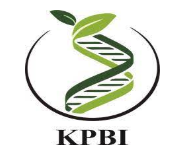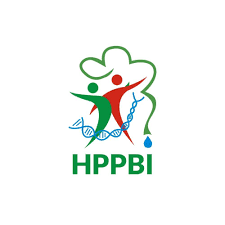PENINGKATAN MOTIVASI DAN HASIL BELAJAR SISWA MELALUI PENERAPAN MODEL PEMBELAJARAN Siklus Belajar 5E (Learning Cycle 5E) PADA KONSEP SISTEM EKSKRESI
DOI:
https://doi.org/10.15575/bioeduin.v8i1.2921Keywords:
Motivation, Learning Achievement, Biology-excretion system, learning cycle 5EAbstract
References
A.M. Sardiman. (2000). Interaksi dan motivasi Belajar Mengajar. Jakarta : PT. RajaGrafindo Persada
Arikunto, Suharsimi. (2006). Dasar-dasar Evaluasi Pendidikan. Jakarta : PT. Bumi Aksara.
Balci, S., Cakiroglus, J., & Tekkayas, C. 2006. Engagement, exploration,
explanation, extension, and evaluation (5E) learning cycle and conceptual change text as learning tools. Biochemistry and Molecular Biology Education. 34(3). 199-203. Tersedia di www.sciencedirect.com.
Budprom, W., Suksringam, P., & Singsriwo, A. 2010. Effects of learning environmental education using 5E-learning cycle with multiple intelligences and teacher‟s handbook approaches on learning achievement, basic science process skills and critical thinking of grade 9 students. Pakistan Journal of Social Sciences. 7(3). 200-204. Tersedia di http://docsdrive.com/pdfs.
Bybee, R. W., Taylor, J. A., Gardner, A., Scotter, P. V., Powell, J. C., Westbrook, A., & Landes, N. 2006. The BSCS 5E instructional model: Origins and effectiveness. Laporan. Disiapkan untuk Office of Science Education National Institutes of Health. Tersedia di http://www.bscs.org/sites/ default/files/BSCS_5E_Instructional_Model-Full_Report.pdf.
Danial, Endang dan Nanan Warsiah. (2009). Metode Penulisan Karya Ilmiah. Bandung: Laboratorium PKn Universitas Pendidikan Indonesia.
Dahar. R. W. 1996. Teori-teori belajar. Jakarta: Erlangga.
Dimyati dan Mudjiono. 2002. Belajar dan Pembelajaran. Jakarta: Rineka Cipta.
Effendy, Onong Uchjana. (1993). Ilmu, Teori, & Filsafat Komunikasi. Bandung : PT Citra Aditya Bakti.
Elida Prayitno. 1989. Motivasi Dalam Belajar. Jakarta: Depdikbud
Ergin, I. 2012. Constructivist approach based 5E model and usability instructional physics. Journal Physics Education. 6(1). 14-20. Tersedia di http://www. lajpe.org.
Ergin, I., Kanli, U., & Ãœnsal, Y. 2008. An example for the effect of 5E model on the academic success and attitude levels of students‟: “Inclined projectile motionâ€. Journal of Turkish Science Education. 5(3). 47-59. Tersedia di http://www.tused.org.
Fajaroh, F. & Dasna, I W. 2007. Pembelajaran dengan model siklus belajar (learning cycle). Artikel. Jurusan Kimia FMIPA UM. Tersedia di http://lubisgrafura.wordpress.com/2007/09/20/pembelajaran-dengan- model-siklus-belajar-learning-cycle/.
Hagerman, C. L. 2012. Effects of the 5E learning cycle on student content comprehension and scientific literacy. A Professional Paper (tidak diterbitkan). Montana State University.
Haribhai, T. S. & Dhirenkumar, G. P. 2012. Effectiveness of constructivist 5 „E‟ model. Research Expo International Multidisciplinary Research Journal. 2(2). 76-82. Tersedia di www. researchjournals.in.
Hadi, Sutrisno, (1994), Metodologi Research, Yogyakarta: Yayasan Penerbitan Fakultas Psikologi UGM.
Isfan Lauhani, (t.t.), model pembelajaran example non example telah mampu meningkatkan hasil belajar siswa. Diakses melalui google search Juli 2013.
Kazu, I. Y. & Bosu, E. 2012. Turkish vocational school students‟ perception of 5E teaching model. International Journal of Learning and Development. 2(6). 221-237. Tersedia di www.macrothink.org/ijld.
Komalasari, Kokom. (2010). Pembelajaran Kontektual. Bandung. PT. Refika Aditama
Liu, T., Peng, H., Wu, W., & Lin, M. 2009. The effects of mobile natural-science learning based on the 5E learning cycle: A case study. Educational Technology and Society. 12(4). 344-358. Tersedia di https://www.iste.org.
Mabsuthoh, N. 2010. Pengaruh model pembelajaran learning cycle terhadap hasil belajar fisika pada konsep masa jenis. Skripsi (tidak diterbitkan). Universitas Islam Negeri Syarif Hidayatullah.
Marlinang Sitompul, (2012), Penerapan model example non example mampu meningkatkan aktivitas belajar dan hasil belajar siswa, http://digilib.unimed.ac.id/UNIMED-Undergraduate-0213154/24946, Diakses Juli 2013.
Moleong, J. Lexy. (2007). Metodologi Penelitian Kualitatif. Bandung. PT Remaja Rosdakarya
Ngalim Purwanto. (2004). Psikologi Pendidikan. Bandung : PT Remaja Rosdakarya.
Nasution, S. (2009). Metode Research (Penelitian Ilmiah). Jakarta: Bumi Aksara.
Nawawi, Hadari, (1995), Metode Penelitian Bidang Sosial. Cetakan 7. Yogyakarta: Gajah Mada University Press.
Hamalik, Oemar. (2002). Proses Belajar Mengajar. Jakarta: Bumi Aksara.
Qarareh, A. Q. 2012. The effect of using the learning cycle method in teaching science on the educational achievement of the sixth graders. Journal Education Sciences. 4(2). 123-132. Tersedia di http://www.krepu blishers.com.
Ramadhani, N. 2012. Pengaruh model pembelajaran kontruktivis 5E terhadap hasil belajar di SMA Laksamana Martadinata. Jurnal Pendidikan Fisika. 1(1). 45-50.
Soomro, A. Q., Qaisrani, M. N., & Uqaili, M. A. 2011. Measuring students‟ attitudes towards learning physics: Experimental research. Australian Journal of Basic and Applied Sciences. 5(11). 2282-2288. Tersedia di http://www.ajbasweb.com/ajbas.
Suastra, I W. 2002. Strategi belajar mengajar sains. Buku ajar (Tidak diterbitkan). Jurusan Pendidikan Fisika, IKIP Negeri Singaraja.
Suastra, I W. 2009. Pembelajaran sains terkini: Mendekatkan siswa dengan lingkungan alamiah dan sosial budayanya. Singaraja: Universitas Pendidikan Ganesha.
Santoso, Ras Eko Budi, (2009), Model-Model Pembelajaran, [Oline] Tresedia: http://wyw1d.wordpress.com/2009/11/10/model-pembelajaran-examplenonexample/. Diakses 2 Oktober 2012.
Somantri, Muhammad Numan. (2001). Menggagas Pembaharuan Pendidikan IPS. Bandung: PT Remaja Rosda Karya.
Subana. (2009). Statistika Pendidikan. Bandung : CV. Pustaka Setia.
Sudrajat, Akhmad, (2008), Pendekatan Strategi Metode Teknik dan Model Pembelajaran. [online]: Tersedia: http://akhmadsudrajat.wordpress.com/2008/09/12/pendekatan-strategi-metode-teknik-dan-model-pembelajaran. Diakses 2 Oktober 2011.
Sugiyono. (2010). Metode Penelitian Kuantitatif Kualitatif dan R & B. Bandung : Alfabeta.
Suparman. (ed.). (1997). Model-Model Pembelajaran Interaktif. Jakarta: STIA LAN Press.
Suryabrata, Sumadi. (1995). Psikologi Pendidikan. Jakarta : Rajawali
Sutadipura Balnadi. (1983). Aneka Problematika Keguruan. Bandung: Aneka Ilmu.
Temel, S., Yilmaz, H., & Ozgur, S. D. 2013. Use of the learning cycle model in the teaching of chemical bonding and an investigation of
diverse variables in prediction of achievement. International Journal of Education and Research. 1(5). 1-14. Tersedia di www.ijern.com.
Trianto. 2012. Model pembelajaran terpadu. Jakarta: Bumi Aksara.
Tuna, A. & Kacar, A. 2013. The effect of 5E learning cycle model in teaching trigonometry on students‟ academic achievement and the permanence of their knowledge. International Journal on New Trends in Education and Their Implications. 4(1). 73-87. Tersedia di www.ijonte.org.
Utari, S., Alfiani, Feranie, S., Aviyanti, L., Sari, I. M., & Hasanah, L. 2013. Application of learning cycle 5E model aided cmaptools-based media prototype to improve student cognitive learning outcomes. Canadian Center of Science and Education. 5(4). 69-76. Tersedia di www. ccsenet.org/apr.
Undang-undang Negara Republik Indonesia Nomor 20 tahun 2003 tentang Sistem Pendidikan Nasional.
Wibowo, A., Munir, H., & Waslaludin. 2010. Penerapan model pembelajaran siklus belajar (learning cycle) 5E dalam meningkatkan hasil belajar siswa pada matapelajaran teknologi informasi dan komunikasi. Laporan Penelitian (tidak diterbitkan). Universitas Pendidikan Indonesia.
Downloads
Published
How to Cite
Issue
Section
Citation Check
License
Authors who publish in Jurnal BIOEDUIN agree to the following terms:
- Authors retain copyright and grant the journal right of first publication with the work simultaneously licensed under a Attribution-ShareAlike 4.0 International (CC BY-SA 4.0) License that allows others to share the work with an acknowledgment of the work's authorship and initial publication in this journal.
- Authors are able to enter into separate, additional contractual arrangements for the non-exclusive distribution of the journal's published version of the work (e.g., post it to an institutional repository or publish it in a book), with an acknowledgment of its initial publication in this journal.
- Authors are permitted and encouraged to post their work online (e.g., in institutional repositories or on their website) prior to and during the submission process, as it can lead to productive exchanges, as well as earlier and greater citation of published work (See The Effect of Open Access).








